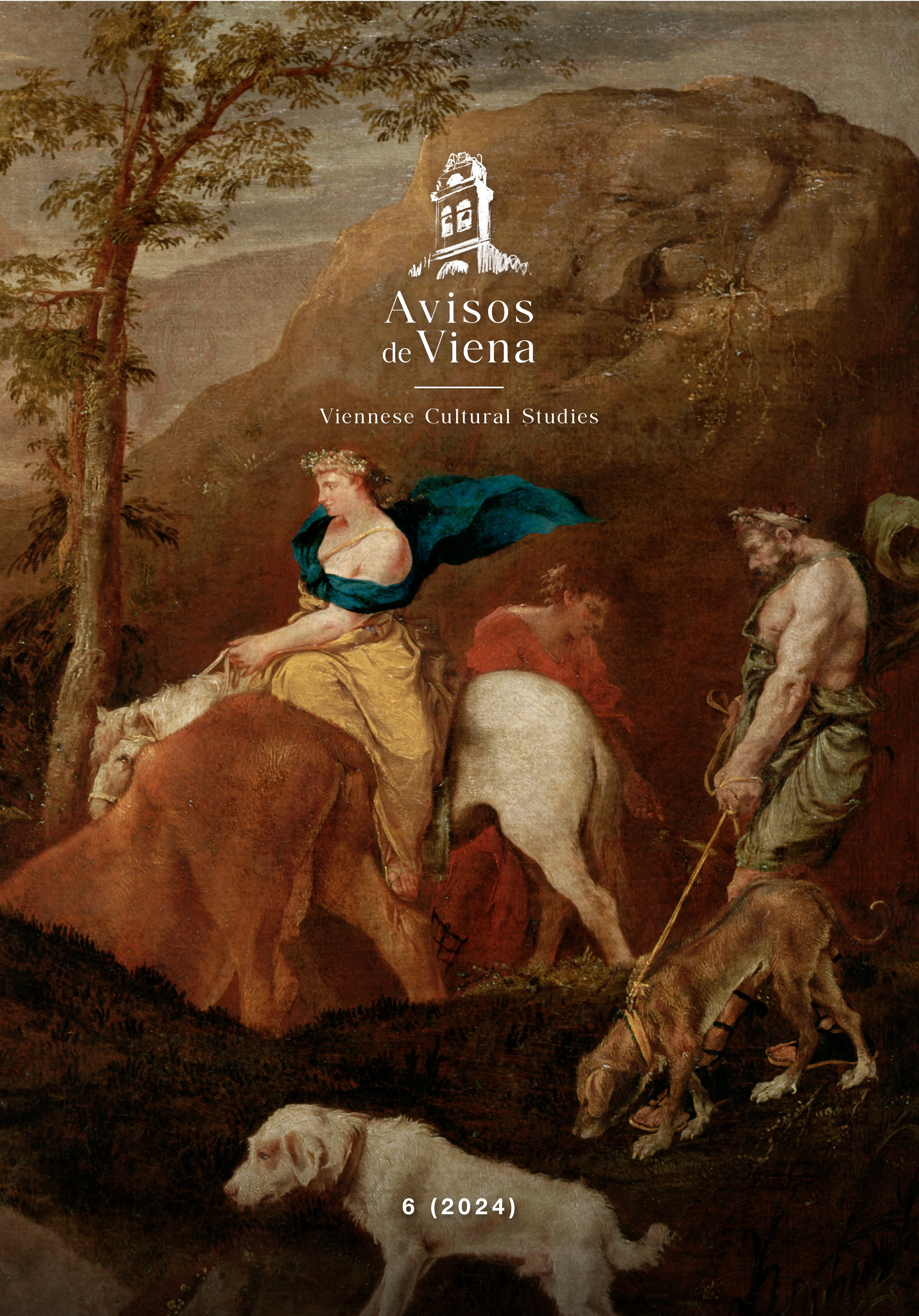Milagros y partos peligrosos en las hagiografías de los siglos XVI y XVII
Una aproximación a las causas de la muerte materna en el Siglo de Oro español
DOI:
https://doi.org/10.25365/adv.2024.6.8529Keywords:
milagros, hagiografía, siglo XVI, siglo XVII, Maternal mortality, Early modern Spain, Childbirth, Societal attitudes, Historical medical practicesAbstract
Addressing maternal mortality during childbirth necessitates an analysis of two overlooked aspects in early modern Spain and Europe: the causes of maternal death and societal attitudes towards endangered birthing mothers. While existing studies provide insights into mortality rates, broader questions remain: What was the social status of endangered parturient women? What roles did midwives and medical professionals play? How are women depicted in historical accounts? Examining contemporary statistics offers some insight, with hemorrhage, hypertensive disorders, infections, and obstructed labor among the leading causes of maternal death worldwide. While precise data for early modern Spain are lacking, understanding contemporary trends sheds light on historical realities and underscores childbirth's perilous nature in the collective consciousness of society.
References
Alonso y de los Ruices de Fontecha, J. (1606). Diez previlegios para mujeres preñadas. Alcalá de Henares: Luis Martínez Grande.
Boverio, Z. (1647). Tercera parte de las crónicas de los frailes menores capuchinos. Madrid: Carlos Sánchez.
Bravo de Sotomayor, G. (1610). Historia de la invención, fundación y milagros de Nuestra Señora de Valvanera, de la orden de san Benito. Logroño: Juan de Mongastón.
Burgos, P. de. (1550). Libro de la historia y milagros hechos a invocación de Nuestra Señora de Montserrat. Barcelona: Claudius Bornatius.
Carbón, D. (1541). Libro del arte de las comadres o madrinas y del regimiento de las preñadas y paridas y de los niños. Mallorca: Hernando de Cansoles.
Caro de Larco, J. (1676). Historia del sagrado monte de la Oliva y su milagrosa imagen. Alcalá: Casa de Francisco García Fernández.
Cetina, M. de. (1609). Discursos sobre la vida y milagros del glorioso padre San Diego de la orden del seráfico S. Francisco. Madrid: Luis Sánchez.
Colombo, F. (1676). Vida del glorioso cardenal San Ramón Nonnat. Madrid: Antonio González Reyes.
Córdoba, D. de. (1676). Vida, virtudes y milagros del apóstol del Perú el B. P. fray Francisco Solano. Madrid: Imprenta Real.
DeLacy, M. (1989). Puerperal fever in eighteenth-century Britain. Bulletin of the History of Medicine, 63(4), 521–556.
Diago Almela, V. J., Perales Puchalt, A., Cohen, M. C., & Perales Marín, A. (2013). Muerte fetal tardía. In M. I. Izquierdo Macías (Ed.), Libro blanco de la muerte súbita infantil (pp. 29–36). Madrid: Ediciones Ergón.
Fröjmark, A. (2012). Childbirth miracles in Swedish miracle collections. Journal of the History of Sexuality, 21(2), 297–312.
García de Caralps, J. (1617). Historia de S. Oleguer, arzobispo de Tarragona y obispo de Barcelona. Barcelona: Sebastián Matevad.
Guzmán, A. de. (1673). Compendio de la maravillosa vida, muerte, reliquias y milagros de la prodigiosa virgen S. Rosa de Viterbo. Valencia: Gerónimo Villagrasa.
Hansen, L. (1665). Vida admirable y muerte preciosa de la venerable madre soror Rosa de Santa María. Valencia: Gerónimo Vilagrasa.
Khan, K. S., Wojdyla, D., Say, L., Gülmezoglu, A. M., & Van Look, P. F. A. (2006). WHO analysis of causes of maternal death: A systematic review. The Lancet, 367, 1066–1074.
Lothian, J. A., & Grauer, A. (2003). "Reality" birth: Marketing fear to childbearing women. The Journal of Perinatal Education, 12(2).
Meléndez, J. (1682). Tesoros verdaderos de las Indias en la historia de la gran provincia de San Juan Bautista del Perú. Roma: Imprenta de Nicolás Ángel.
Murillo, D. (1616). Fundación milagrosa de la capilla angélica de la madre de Dios del Pilar. Barcelona: Sebastián Matevad.
Núñez, F. (1580). Libro intitulado del parto humano. Alcalá: Juan Gracián.
Ojea, D. (1589). Breve instrucción de la devoción, cofradía e indulgencias y milagros del Rosario de Nuestra Señora. Madrid: Casas de la viuda de Querinos Gerardo.
Presentación, J. de la. (1673). La corona de Madrid: Vida de la venerable madre Mariana de Jesús. Madrid: Julian de Paredes.
San Jerónimo, A. (1668). Vida, virtudes y milagros de la prodigiosa virgen y madre Ana de San Agustín. Madrid: Francisco Nieto.
San José, M. de. (1644). Historia de las vidas y milagros de nuestro beato padre fray Pedro de Alcántara. Arévalo: Emprenta de Gerónimo Murillo.
Sarduynápoles, M. R., Molina Peñate, L. L., Tapia Llody, G., Medina Arencibia, C., & Chiong Hernández, D. C. (2018). La cesárea como la más antigua de las operaciones obstétricas. Revista Cubana de Obstetricia y Ginecología, 44(2).
Scalone, F. (2014). Effects of nutritional stress and socio-economic status on maternal mortality in six German villages, 1766-1863. Population Studies, 68(2), 217–236.
Schwartz, L. (2009). Milton and maternal mortality. Cambridge: Cambridge University Press.
Sgambata, S. (1671). Resumen de la vida y milagros de san Francisco de Borja. Viena: Mateo Cosmerovio.
Suñer, D. (1651). Vida y milagros de Santo Domingo Soriano. Perpiñán: Esteban Bartan.
Tobar, P. de. (1735). Verdadera histórica relación del origen y milagros de la imagen de la Virgen María de Chiquinquirá. Madrid: Antonio Marín.
Usunáriz, J. M. (2023). La percepción del parto en los siglos XVI y XVII: peligros, milagros y comadres. In J. M. Usunáriz & J. Ruiz Astiz (Eds.), La mujer y los universos femeninos en las fuentes documentales de la Edad Moderna (pp. 273–295). Madrid: Dykinson.
Downloads
Published
How to Cite
Issue
Section
License
Copyright (c) 2024 Jesús M. Usunáriz

This work is licensed under a Creative Commons Attribution 4.0 International License.
© Open Access, CC BY 4.0








